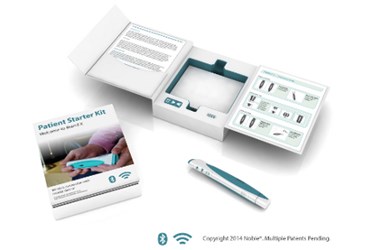Considering Human Factors And Training In Medical Device Design

By Craig Baker, Executive VP, Noble
The patient has become the end user when it comes to many types of medical technology, and that trend is likely to continue with the rise of mobile health (mHealth), remote patient monitoring, and other healthcare industry drivers. As a result, the human factor is becoming increasingly important in the design of next-generation medical devices and diagnostics. One industry to which medical device manufacturers can turn for guidance on usability best practices is drug delivery.
Over the last decade, the pharmaceutical market has seen a dramatic increase in self-administered injections, due the success of first-generation biologics. As new injection drugs reach maturity, biopharmaceutical and pharmaceutical companies are looking for ways to differentiate their brands and speed the development and launch of their pipeline products. One way for brands to accomplish this is by designing drug delivery training devices with the patient’s cognitive, physical, and emotional functions in mind.
Human factors can impact a patient’s ability to understand the device and use it properly, thus contributing to compliance or noncompliance of the medical treatment. These factors can create a range of challenges for the patient during the learning process, including:
- Cognitive: The psychological impact of diagnosis combined with new medical terminology and jargon may block the patient’s ability to remember new information.
- Physical: Mobility, age, and dexterity impairments associated with specific therapeutic categories make it physically challenging to use the device. Lack of experience and education with medical devices also leads to onboarding challenges for patients that are naïve to self-administration.
- Emotional: Fear and anxiety associated with self-injecting often leads to avoidance behaviors. There is also a social component to this human factor as the social needs of the patient, including family and medical support systems, may also impact treatment.
Within drug delivery, most patient errors occur in the first 30 days of treatment, so focusing on patient onboarding success at launch can lead to improved adherence and understanding during that vital window during treatment. Device training programs are one way to incorporate an understanding of the human factors into the treatment program.
Patients make errors as they learn; therefore, device trainers place the errors in the training tool, as opposed to the drug delivery device. This focuses the creating a confident and error-free patient prior to the first injection.
Device trainers mimic the medical device and utilize multisensory technology to improve message recall, giving patients a practice tool to master technique and ensure proper use. In the drug delivery market, injection training devices are customized for the therapeutic area and specific treatment, replicating the actual drug delivery device but without the needle or the drug. Multisensory technology includes audio, visual, and tactile feedback to maximize learning and provide a superior educational experience.

Neurological research has facilitated a deeper understanding of how patients process and perceive information during the learning process of their treatments. Recent neuroimaging studies reveal how the widespread multi-sensory network is activated during cross-modal processing. When compared to uni-sensory processing, these systems allow for behavioral enhancements during multisensory identification. These studies also support theories related to optimal memory retrieval, requiring the reactivation of perceptual regions engaged at encoding. Therefore, stimulating multiple areas of the brain during training or knowledge transfer increases the recall and retention of educational messages. Multisensory training devices are the key to achieving an increased level of understanding with a user.
New smart technologies are now allowing designers to take multisensory training devices to an advanced level. The multisensory training device is not only a simulation device, but also a teaching device, incorporating real-time error detection, notification, and correction. Smart trainers incorporating sensors and electronic components allow the patient to detect errors and correct errors before moving forward in the training sequence. The audio and visual technologies integrated into next-generation training devices are able to support multiple languages and incorporate smart sensors, coded software, microprocessors, speakers, and visual displays. Through this process, direct feedback becomes the most accurate and accelerated process available.
Knowledge of the human learning process can improve the design and quality of any medical device created for the patient. An educated patient not only results in better treatment outcomes, but also drives brand preference from the healthcare provider when the device comes with a robust training platform, creating a competitive advantage. The future is only limited by a patient’s ability to safely and effectively self-administer or use the device. As medical devices continue to evolve, the need to connect with and improve the lives of patients will not, meaning companies must carefully consider the best way to achieve compliance.
About The Author
 Craig Baker is responsible for Noble’s international development efforts, focused on providing patient-centric educational and onboarding solutions for commercial, brand management, and device development teams. Having joined Noble shortly after it was founded in 1994, he has been active in the growth of Noble’s infrastructure, which more recently includes growth in engineering and manufacturing. Areas of expertise include patient onboarding, device training, and product development. Mr. Baker has a bachelor’s degree from the University of Iowa and a master’s degree from the University of South Carolina. For more information on Noble, visit gonoble.com.
Craig Baker is responsible for Noble’s international development efforts, focused on providing patient-centric educational and onboarding solutions for commercial, brand management, and device development teams. Having joined Noble shortly after it was founded in 1994, he has been active in the growth of Noble’s infrastructure, which more recently includes growth in engineering and manufacturing. Areas of expertise include patient onboarding, device training, and product development. Mr. Baker has a bachelor’s degree from the University of Iowa and a master’s degree from the University of South Carolina. For more information on Noble, visit gonoble.com.
